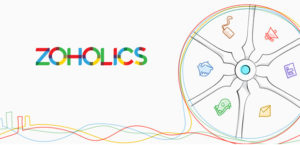It has been my belief for several years that our industry is trending toward the formation of an information utility. I draw this conclusion carefully based on my understanding of how markets develop and commoditize. I also believe large swaths of this utility deserve regulation (that’s you, Mark Zuckerberg).
I consider the beginning of the modern information technology era as the early 1970s. You can graph a rising line of performance and a declining one for price — essentially Moore’s Law — and that signals the economic importance of IT.
This view eliminates a chunk of the mainframe era as well as the earliest computers of the 1950s. My reasoning is simple: The earlier era was seminal but had so little economic impact that it was not important to this story. For instance, the moon mission had onboard computers, but it has been referred to by people in a position to know as an era of analog rockets.
Democratization and Commoditization
The relentless diffusion of technology throughout the economy in the 1970s is what formed the high-tech era. From then, you can track a timeline that includes mini-computers, relational databases, SQL (structured query language), third- and fourth-generation programming languages, general-purpose operating systems, GUIs (graphical user interfaces), microcomputers, personal computers, networks, the Internet, client servers, cloud computing, social media, wireless and other stuff that I am leaving out.
The net effect has been not only constant reductions in costs and increases in performance but also the democratization of technology so that anyone can afford its benefits today. Along the way, we’ve seen a great deal of commoditization take place. What’s cloud computing but the commoditization of IT?
The last steps in any disruptive innovation are commoditization and utility formation. Historically, the same thing happened in the telephone and electricity industries. They weren’t always utilities capable of taking on all customers — they were private companies first. Growing markets made them indispensable, and that provided technical and political pressure to form utilities.
The same thing is happening right now in IT. It is happening before our eyes. Large vendors like Oracle and Microsoft are announcing increasing compatibility. Others, like Salesforce, have built vertically integrated stacks that enable them to support the needs of partners and customers and to integrate with third parties.
Becoming a utility, in my book, entails having a vertically integrated stack plus the necessary communication, integration, and security needed to give customers a soup-to-nuts experience.
There are many candidates for inclusion in the pantheon of utility IT providers, a forming oligopoly that, much like today’s electricity market, will provide the appearance of a homogenous market through adoption and strict adherence to standards. To that group, we should add Zoho.
Potential Disruption: Zoho One
Zoho has been around for decades, and it is still private. Founder and CEO Sridhar Vembu has been at the helm since 1996. He likes not being on the treadmill of quarterly reporting, preferring instead to think independently about the deep future.
Remaining private, Vembu and his team have self-financed and focused on customers, and they have developed a maniacal focus on building everything in-house up to and including their workforce. Many Zoho employees are graduates of the company’s rigorous training program.
Increasingly, Zoho’s combined strengths are serving it as it challenges the commoditizing efforts of other software providers. It can become a low-cost provider if it wants to.
So, it is no surprise that Zoho introduced an updated Zoho One “operating system for business” to the world on Thursday. What’s most interesting to me is how closely Zoho One resembles a fully functional part of an IT utility that I had thought was still a few years off. Let me elaborate.
Zoho One is both vertically integrated and outwardly connectible. It sits on its own stack and tries to do as much internally as possible by offering more than 45 apps. It also acknowledges the greater market’s need to integrate third-party apps.
It’s connectible by virtue of its platform-based integration and single sign-on. It also sports numerous advanced extensions to customer relationship management — like business intelligence, artificial intelligence, bots, voice assistance, video, and much more — that are now essential. Taken together, all of these components add up to a big chunk of a utility grid.
Anyone considering a new CRM system, whether it’s a first for a business or a logical upgrade, should add Zoho to its shopping list. Zoho may not be right for all customers, but the company has made its bones working with companies that have about 4,000 employees or fewer. Still, the reality is that Zoho’s architecture is more scalable than that, and some customers are already testing its limits.
Markets like CRM today have a good deal of stability. For instance, any number of emerging CRM businesses are ready to take on Salesforce, but it’s not likely they will have the chance because they are me-too solutions.
Zoho could be different, if only because it is not trying to become the next Oracle, Microsoft or Salesforce. It is happy to define its own vision, and that may be different enough to spark another disruption. That’s why Zoho One is so interesting.


























































